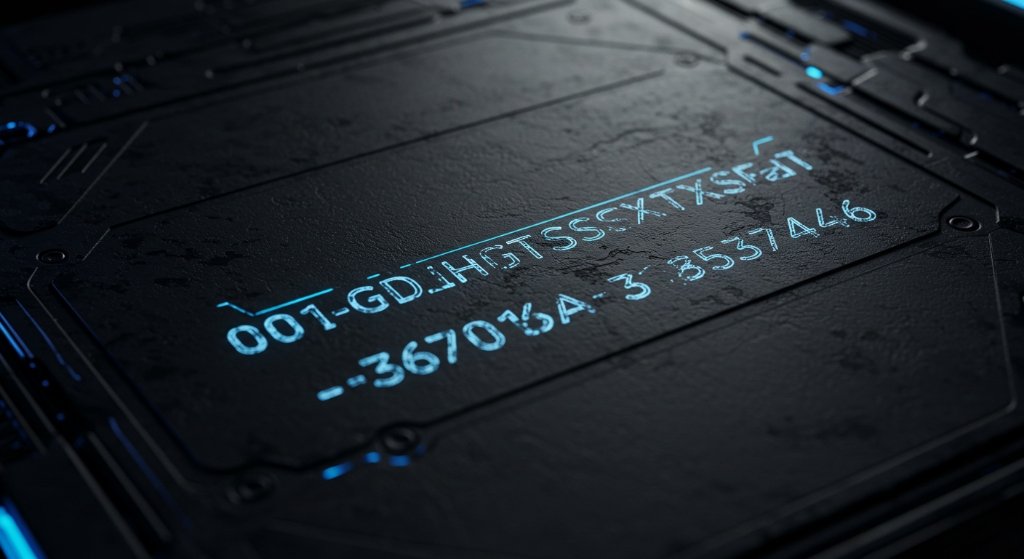What Is 001-gdl1ghbstssxzv3os4rfaa-3687053746?
The code 001-gdl1ghbstssxzv3os4rfaa-3687053746 might seem like a random string of letters and numbers at first glance. But lately, internet users across forums, social media, and tech blogs have been spotting it and wondering: What is it? Why does it appear in so many odd places—from browser histories to app notifications? This mysterious string is catching attention because of how unusual and persistent it appears. Is it a malware file? A system tag? Or maybe even a digital breadcrumb from a hacker?
This article breaks it all down. We’ll explore where this code shows up, what theories exist about its purpose, and how you should respond if you come across it.
You Might Also Like: soa os23
Where Has This Code Been Seen?
Many users report seeing 001-gdl1ghbstssxzv3os4rfaa-3687053746 in places like:
- Temporary browser cache files
- Background data in mobile apps
- Logs on certain websites
- Suspicious redirects
- System folders during scans
Some even discovered it in cloud storage URLs or while reverse-engineering app data. This raises several questions about whether it’s a bug, a tracking code, or even a signature used by a tool or software system.
Possible Explanations for 001-gdl1ghbstssxzv3os4rfaa-3687053746
Here are the most common interpretations:
A Placeholder ID or Tracker Code
Developers often use unique IDs for analytics, testing, or debugging. It’s possible this code is an automatically generated string used to identify user sessions or backend events in a hidden database.
Part of a Malware Signature
The complexity of the code has led some cybersecurity experts to suspect it might be linked to malware. Some anti-virus scanners have flagged similar strings in adware or trojan droppers.
Internal File Naming by Cloud Systems
When content is uploaded to platforms like Google Drive, Dropbox, or Firebase, internal systems sometimes auto-generate filenames that look like this. It may have nothing to do with you—but it still raises privacy questions.
Why Is It Going Viral?
This code may not have become noteworthy if it weren’t for the sheer number of mentions it’s receiving lately. Threads on Reddit, posts on Twitter (X), and even TikToks are speculating about its origin.
Reasons for the buzz:
- Its format feels like a “secret code”
- It’s popping up in personal accounts
- It hints at tech or government surveillance
- It evokes curiosity and conspiracy theories
Is It Dangerous?
So far, there’s no confirmed evidence that 001-gdl1ghbstssxzv3os4rfaa-3687053746 is malicious by itself. However, its presence could be a symptom of something suspicious.
Things to check:
- Did you install a shady browser extension?
- Are you visiting non-secure websites?
- Have you noticed new pop-ups, ads, or strange behavior?
If yes, then this string may be part of a larger adware or spyware pattern. You should run a malware scan and reset your browser.
What Should You Do If You See It?
Here’s a step-by-step approach:
- Run Antivirus and Malware Scans: Use tools like Malwarebytes, Windows Defender, or Norton.
- Clear Browser Cache and Extensions: Sometimes these codes are logged from faulty plugins.
- Avoid Downloading from Suspicious Sources: Especially free PDFs, cracked apps, or fake login pages.
- Monitor Any Unusual Account Activity: If this code came from a link or download, check for account changes.
- Use VPN and Secure Browsing: This can help mask your activity and prevent fingerprinting or cookie tracking.
Could It Be Linked to AI or Web Crawlers?
Another theory is that the code may be tied to AI bots or data crawlers. Platforms that index the internet use advanced IDs to track, organize, and map data across the web. A string like 001-gdl1ghbstssxzv3os4rfaa-3687053746 may simply be a bot’s way of referencing a specific data point.
While that sounds harmless, the concern grows when users can’t tell if this “bot” is good (e.g., Googlebot) or bad (e.g., scraping your private info).
Community Theories and Speculation
Here are some of the more creative and wild theories from the internet:
- Alternate Reality Game (ARG): Some believe it’s a hidden part of a puzzle for a viral marketing campaign.
- Dark Web Tagging System: A way for illicit platforms to track user sessions secretly.
- Crypto Mining Markers: Used to mark infected systems for background crypto mining.
- CIA or NSA Trace: Yes, the conspiracy theories go that deep.
While these may not be true, the fact that people are guessing at all shows how much of a mystery this string still is.
How to Stay Updated
If this string matters, you’ll likely see more news about it. Here’s how to track updates:
- Set a Google Alert with the full keyword
- Follow tech subreddits like r/privacy, r/techsupport, or r/cybersecurity
- Join Discord or Telegram groups focused on tech investigations
- Bookmark blogs or newsletters on digital security
The more people talk, the more likely someone will figure it out—or confirm it’s harmless.
You Might Also Like: ssis 469
This Might Not Be the Only One
Strings like 001-gdl1ghbstssxzv3os4rfaa-3687053746 may be just one of hundreds circulating quietly online. Some people report similar ones like:
- 000-lsdkfjlsd90fjl-kjlds998
- 223-htds9kj3h4jh3b4ss-9898321
- rdm8-akd02l34khasf2lkjds-01119
If you’ve seen multiple codes like this in your system or online, it may be part of a bigger pattern worth investigating.
What Could Happen Next?
If the popularity of this string grows, it may lead to one of the following:
- A formal tech blog analysis or whitepaper
- An official company statement if it’s linked to a software vendor
- Crackdowns if it’s part of unauthorized data sharing
- An internet mystery solved by a group of curious Redditors
We’ve seen viral mysteries go from joke to headline before. Think “cicada 3301,” “the blue whale game,” or “Qanon drop codes.” Even if this isn’t that serious, the format invites curiosity.

